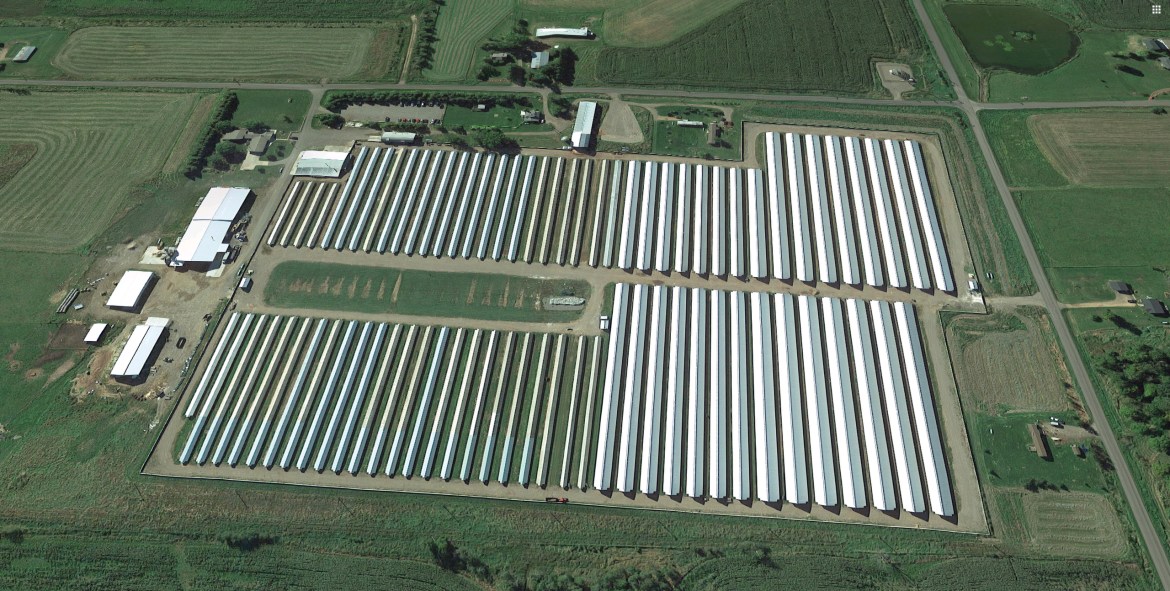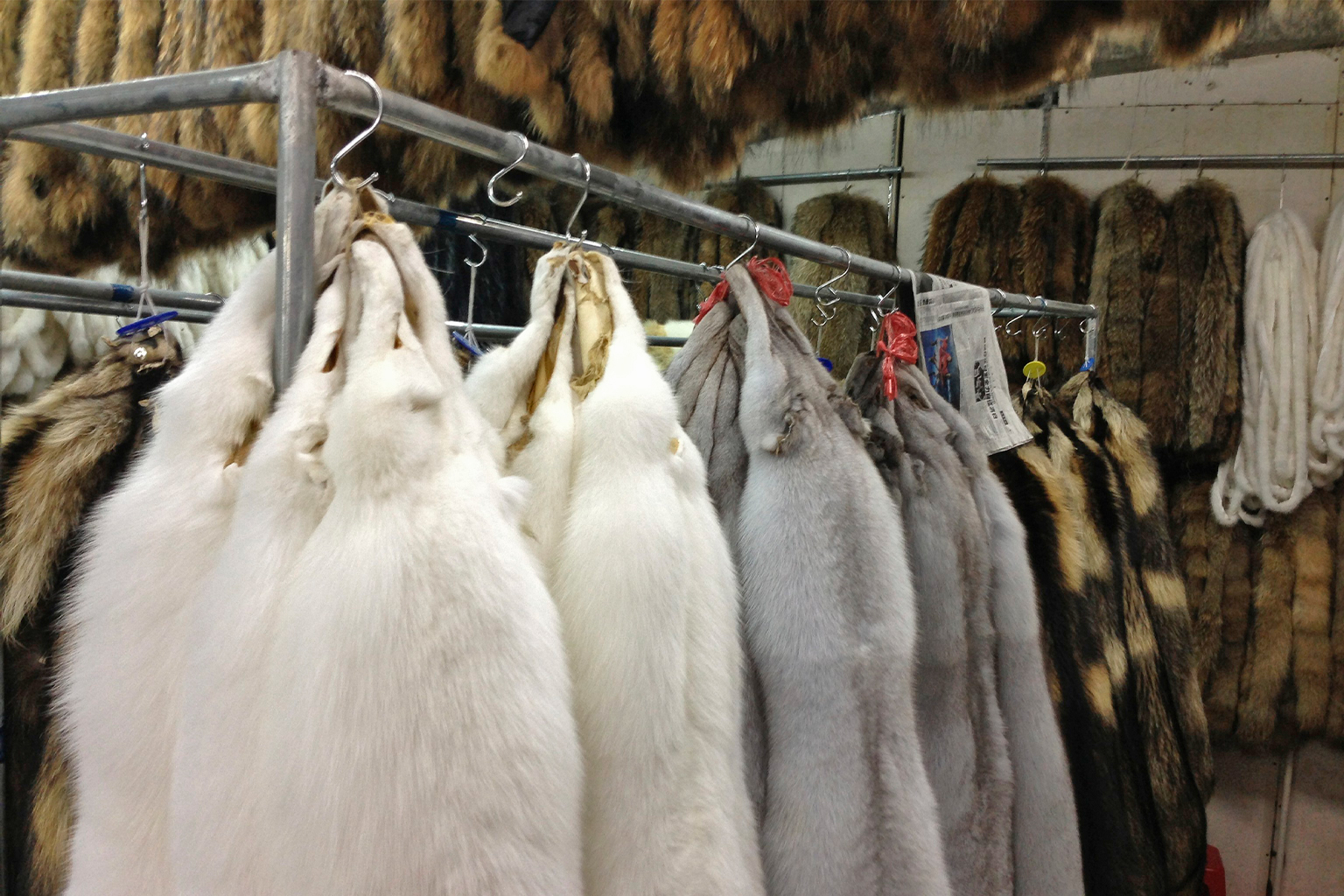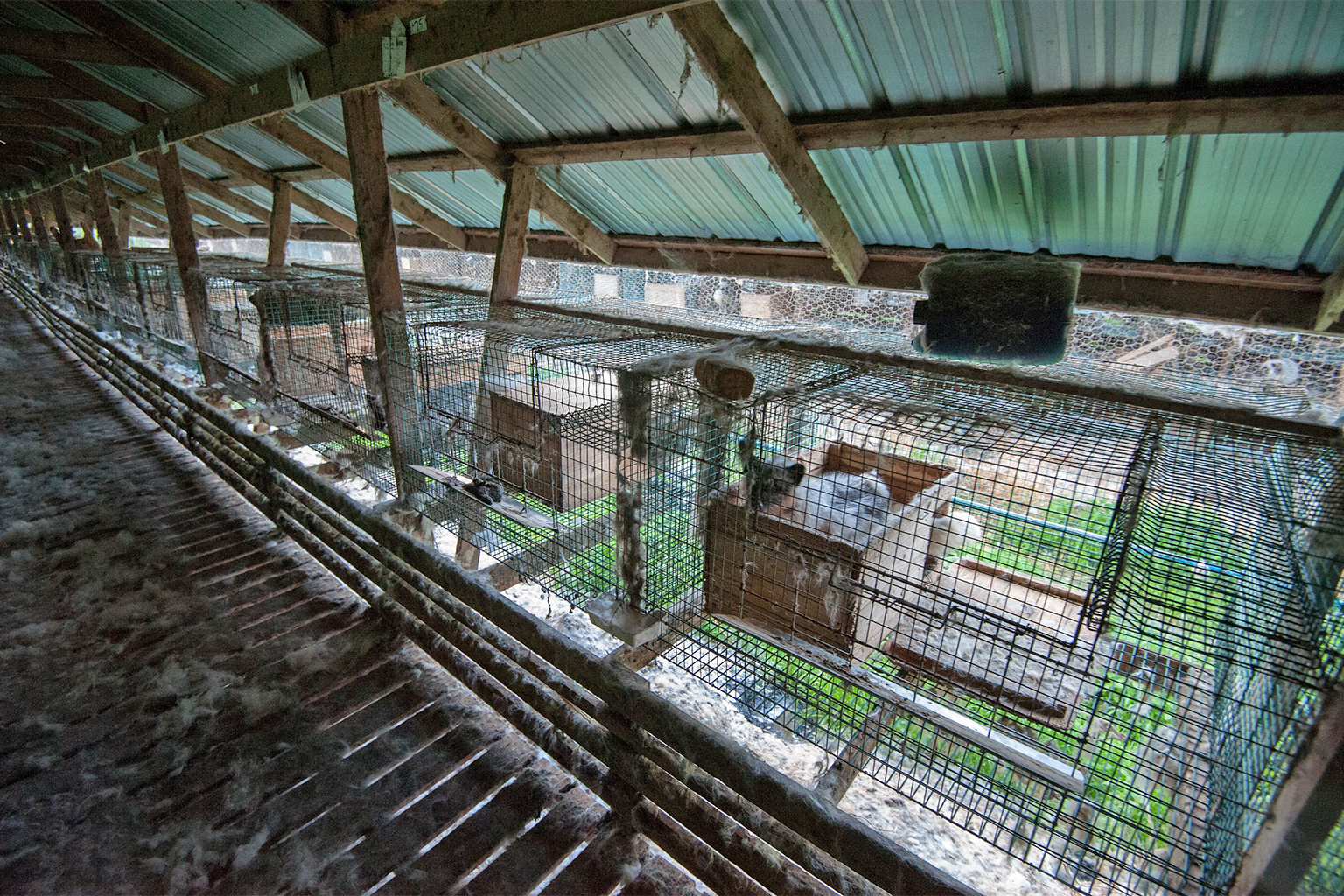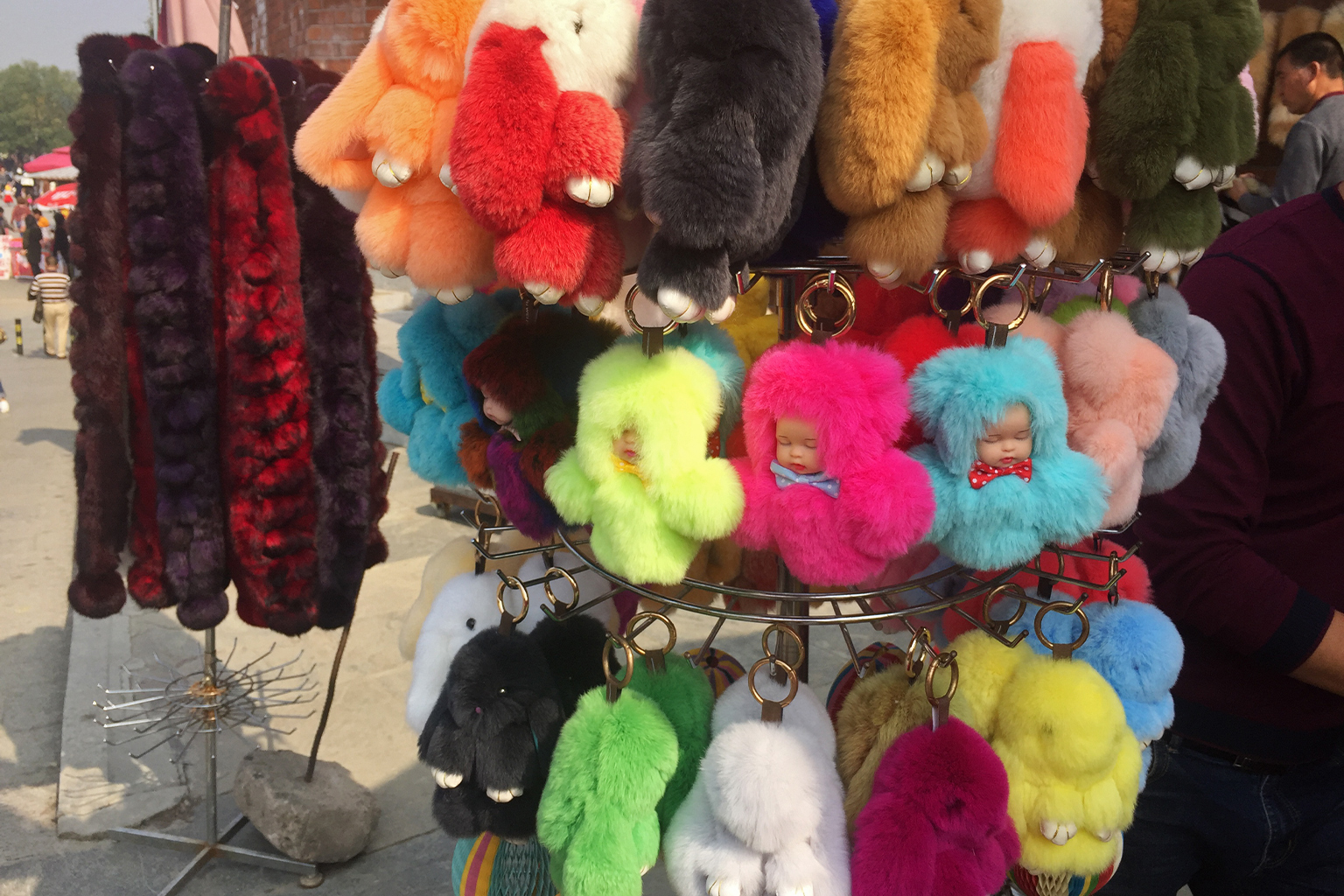
- It has long been known that zoonotic diseases, which originate in animals and can jump to humans and back again, have been a prime source and vector for pandemics, with COVID-19 the most recent example. What is less known is the role the global fur-for-fashion industry plays in the spread of zoonotic disease.
- In 2020, COVID-19 spread to minks on EU fur-to-fashion farms; the virus also spread from the animals to a farm worker. Denmark ordered the culling of 17 million farm-raised minks. Mink farms in 10 countries have since been hit by outbreaks, including the U.S., Canada, France, Greece, Italy, Latvia, Lithuania, Poland, Spain and Sweden.
- China is the largest producer and consumer of fur for fashion, with the U.S. and EU both major players as well. In China, government support, producer lobbying, weak regulation and popularity with Chinese consumers has kept that nation’s fur market strong. It is very well supplied by Chinese farms and EU fur farm joint ventures.
- The fashion trend today is not for full-length fur coats, but for fur trim on sports coats, caps, shoes and accessories. Animals killed for their fur include minks, sables, rabbits, chinchillas, foxes and raccoon dogs. All have the potential to serve as zoonotic disease sources and spreaders. Globally, an estimated 95% of fur comes from farms.
In the complex universe of COVID-19 and other zoonotic diseases (those that can jump from animals to humans and back), key questions remain largely unaddressed, including what role fur farming for the fashion industry plays in the spread of highly transmissible zoonotic diseases, and how the industry should be managed to minimize risk.
Zoonoses are defined as any diseases or infections naturally transmissible from vertebrate animals to humans. Zoonotic diseases have become an urgent contemporary concern due to vast and rapid global deforestation, especially in the tropics, which increases the risk of human contact with animals that host unknown viruses. Also an important factor in their spread is the legal and illegal wildlife trade, as well as farmed animal systems developed by the livestock, fur and food industries that gather many thousands of animals together — including wildlife species such as mink — in confined environments until slaughter.
Up to 75% of all new or emerging infectious diseases are zoonotic in origin, according to the U.S. Centers for Disease Control and Prevention. COVID-19 (caused by the SARS-CoV-2 virus) and two other coronavirus diseases, Severe Acute Respiratory Syndrome (SARS) and Middle East Respiratory Syndrome (MERS), are just a few of the many zoonotic diseases to emerge in the last 20 years.
SARS, which emerged in 2002 in China and killed 774 people worldwide, was likely transmitted from horseshoe bats via an intermediary host, the Asian palm civet, which were bred on factory-style farms and widely sold in Asian markets for food. Raccoon dogs, raised for both meat and fur, also tested positive. MERS possibly jumped to humans from camels, which are farmed for milk, meat, leather and racing; MERS killed 858 people, 35% of those infected. None of these viral respiratory diseases, however, compares to the destructive scope or intensity of the new and deadly coronavirus. To date, COVID-19 has infected more than 223 million people and killed more than 4.6 million worldwide. Its source is still uncertain.
The fur industry–zoonotic disease connection
Importantly, humans can also infect animals with zoonotic diseases. That two-way street has raised concern for public health during the current pandemic, and has set off alarm bells in the often poorly regulated global fur-for-fashion industry.
In spring of 2020, COVID-19 infected minks in fur-for-fashion farms in Europe. Then, in May 2020, the virus was transmitted in the other direction, with a captive animal infecting a worker on a farm in the Netherlands, raising serious concerns that mink could become a permanent reservoir for the disease — potentially allowing it to evolve as it jumps back and forth to humans, and possibly becoming more contagious or virulent.
In response, the Danish government ordered the destruction of 17 million farm-raised minks, while a hasty, and possibly illegal burial disposal process of 10,000 tons of animals led to fears of further disease spread.
According to the World Organization for Animal Health (OIE), mink farms in 10 more countries have since been hit by COVID-19 outbreaks: Canada, France, Greece, Italy, Latvia, Lithuania, Poland, Spain, Sweden and the United States. Together, the Netherlands and Spain sacrificed more than a million minks. The biggest U.S. outbreak occurred in Wisconsin, where farmworkers seem to have spread the disease to the animals. Wisconsin’s 19 mink farms, neither regulated nor licensed by the state, are the largest U.S. source of mink pelts used by the fashion industry.
The European Union, in turn, is one of the world’s main sources of fur clothing, led by Denmark, Finland, Italy, Poland, Greece and the Netherlands. Exports are worth hundreds of millions of euros annually, according to the U.N. Comtrade database.

“The rapid spread of SARS-CoV-2 [COVID-19] infections on and between mink farms demonstrates that these farming systems do represent a risk for transmission of the virus. It has also been demonstrated that farm workers have infected mink and vice-versa, therefore a zoonotic risk is also present,” Keith Hamilton, who heads the OIE’s preparedness and resilience department, told Mongabay.
“Zoonotic disease emergence and spillover are inconceivably complicated, depending on a complex interaction between countless pathogens, host and environmental factors. Research to better understand disease emergence needs significant investment and to be highly multidisciplinary … bringing in new experts with innovative approaches,” Hamilton said.
COVID-19 has already infected numerous other species: In one lab study, researchers found that nonhuman primates, cats, ferrets, hamsters, rabbits and bats were susceptible. SARS-CoV-2 RNA has also been detected in felids, minks and dogs in the field.
In the United States alone, farmed mink, cats, cougars, dogs, gorillas, lions, otters, snow leopards and tigers were diagnosed with the disease as of September 13, 2021, according to the USDA. Of particular concern, in mid-December 2020, a wild mink trapped near a Utah mink farm was confirmed to have the COVID-19 virus, posing serious but unanswered questions to officials regarding threats to public health, wildlife and ecosystems.
The most valued animal in the global fur trade remains the American mink (Neogale vison), whose fur is used in clothing, accessories and homeware items (luxury blankets, etc.). Other animals killed for their fur include sables (Martes zibellina), rabbits (family Leporidae), chinchillas (Chinchilla chinchilla and Chinchilla lanigera), foxes (Vulpes spp.) and raccoon dogs (Nyctereutes procyonoides). All these animals have the potential to serve as disease sources and spreaders. Globally, an estimated 95% of fur comes from farms.

Brave new viral world
There are about 1.7 billion viruses in the world, of which an estimated 600,000 are likely to be zoonotic. “Very few of them could potentially cause [widespread] illness and death, but their impact might be terrible, as we see with SARS-CoV-2,” said Dennis Carroll, former director of the United States Agency for International Development’s (USAID) Emerging Threats Program. “We need to find which ones circulating in wildlife are more likely to pose a risk to humans,” he said, adding that “We are more concerned about the viruses that can mutate rapidly and infect multiple species.”
Carroll previously ran the USAID Predict program, established to “strengthen global capacity for detection of zoonotic viruses with pandemic potential.” This decade-long initiative collected more than 140,000 biological samples from wild animal reserves and discovered more than 1,000 new viruses.
When the Trump administration defunded and ended Predict in 2019, Carroll and other scientists launched the Global Virome Project (GVP), aimed at creating a global genetic atlas of all viruses existing in wildlife and domestic animals. “It is very feasible [to create a global genetic atlas] with the existing technologies. It is [merely] a matter to commit to it,” Carroll said.
Some of the project’s initial work was stopped due to the pandemic, but the real issue is funding. GVP needs $100 million annually over the next decade to accomplish its mission. “We continue to advocate for funds, and hopefully will generate the resources,” Carroll said.

Carroll revealed that scientists still don’t know the precise role fur farms have played, or might play in the future, in the spread and mutation of COVID-19, but he notes that captive animals have been instrumental in spreading many other diseases. “Pigs and birds in industrial facilities are critical in allowing [influenza] viral amplification in human populations. For coronaviruses, we do not have the same clarity,” he said. But due to the COVID-19 outbreaks on mink farms in 2020, he added, there is now “the need for those places to have high levels of biosecurity.”
However, “The level of biosecurity and biosafety on fur farms is not standardized [globally],” warns a World Health Organization (WHO), OIE and U.N. Food and Health Organization (FAO) assessment published in February 2021. That study notes that:
Many fur animals are kept together in a small area, and virus transmission in such large numbers of a homogenous population can drive virus evolution. Despite public awareness, use of full PPE [personal protective equipment] is still inconsistently used at farms and the close contact during mink husbandry practices and pelting and processing is a continued risk for spillover of the [COVID-19] virus to humans and/or animals. Also, availability of PPE is limited in some countries.
The WHO assessment evaluated the risk of virus spillover from commercial fur farms to humans, and of SARS-CoV-2 transmission from farm animals to wildlife populations in 36 countries. Based on regional fur production volume, and infection rates as of winter 2020, risk was deemed low in Africa, moderate in the Americas and Asia, and high in Europe.
Kopenhagen Fur, a cooperative company owned by 1,500 Danish fur farmers and the world’s largest fur skin auction, told Mongabay that “Denmark has extremely high standards for livestock, including mink, and intensive public control of compliance at farm level. Infection of COVID-19 on mink farms came from humans and not the other way around. [We] have no knowledge of any zoonoses coming from farmed mink to humans.”
Adam Gono, the International Fur Federation’s director of sustainability and innovation, said that “While believing that the reaction of some governments has been clearly disproportionate to the scale of the risk associated with COVID-19 in fur farms, IFF nevertheless addresses this issue seriously. Our members are in contact with local and national authorities and committed to strict biosecurity measures, including continuous use of protection equipment, isolation of the farms from wildlife, limiting farm entries, reporting of mortality, regular testing of both people and animals, quarantines, etc. Farms have reached a significantly higher level of vaccination of its workers than the general population, in most farming countries converging to 100%. Moreover, through negotiations with three vaccine providers and respective authorities, IFF is helping farmers to roll out vaccination for their animals.”
James Wood, head of Cambridge University’s Department of Veterinary Medicine, argues that wildlife “farming can be done in very biosecure ways … However, these [industrial farming] systems are usually intensive and the consequences of disease incursion into such systems are typically severe.”
Vaccines to protect animals are likely not a long-term answer to prevent disease transmission between animals, or from humans to animals, Wood added. “We can only vaccinate against infections that we know about. Diseases like COVID-19 can be devastating to industries prior to animal vaccines being available.”

EU and U.S. mink fur-for-fashion business
The way many wild animals live on farms, including fur mammals — often kept in close proximity in small cages — easily facilitates the rapid transmission of microorganisms, said biologist Wladimir J. Alonso, co-author of the 2020 book Pandemics, global health and consumer choices. “The chronic stress resulting from the confinement of the animals in tiny spaces is in itself immunosuppressive, facilitating the transmission of infectious diseases,” Alonso told Mongabay. “Those facilities have high levels of ammonia and fecal dust, resulting from the volume of animal excrement, which compromises their respiratory function.”
Public awareness is growing about potential disease spread from such industrial farming operations. One example: the European Citizens’ Initiative, which enables EU citizens to propose new laws, and which recently gathered 1.4 million signatures supporting a ban on cages for mother pigs, quails and ducks, among other animals. The proposed legislation included rabbits but didn’t extend to other fur animals. However, it is seen by some experts as an important step toward preventing zoonotic disease spread. In late June, the European Commission, responding to the citizen-initiated call for action, proposed legislation to “phase out and prohibit the use of cages.”

Prior to the COVID-19 outbreak, Europe was an international leader in the fur production industry, with around 5,000 farms in 23 countries, according to the WHO/OIE/FAO assessment. It notes that the biggest EU fur producers in 2018 were Denmark (with 17.6 million animals), Poland (5 million), the Netherlands (4.5 million), Finland (1.8 million), Greece and Lithuania (both 1.2 million). Together, they accounted for 50% of all global production. This vast number of captive animals, while a source of significant profit, also has potential as a reservoir for disease if not properly managed.
Animal welfare and public health concerns have caused Europe to enter into a transition period on fur production. Several countries, including the U.K., Germany, Belgium, Austria, Serbia, Luxembourg and the Czech Republic, have banned fur farming in the last two decades. Following COVID-19 farm infections, the Netherlands permanently closed its mink farms in March 2021, while France announced the same prohibition for 2025.
After culling its mink population last year, Denmark suspended mink production and export for 2021. “It is not decided yet if Denmark will lift the ban in 2022. There will be further political negotiations on the subject [this] fall, based on the latest risk assessments,” said Mie Rasmussen, press officer at Denmark’s Ministry of Food, Agriculture and Fisheries.
North America also continues to be a major source of fur for the fashion industry. In 2018, the United States produced 3.1 million minks, while Canada sold 1.8 million pelts from various species. An estimated 5 million animals are trapped in the wild globally for pelts, mostly in the U.S., Canada and Russia.

The China connection
China leads the world in producing the most fur for fashion, harvesting 50.5 million skins annually, with mink, fox and raccoon dog the main harvested species. China is also the biggest fur-for-fashion consumer, sustaining fur-farming companies around the world. Until early 2020, Denmark’s mink farms regularly sold pelts to China, garnering large profits.
“China contributes to sustaining the global fur industry, which would not be economically viable in other countries without increasing joint ventures. Since 2000, Chinese fur farms have [even] been importing live mink and fox from abroad as studs for breeding,” Pei Su, CEO and co-founder of ACTAsia, an animal welfare NGO, told Mongabay. China’s “regulations related to fur farming are much less stringent than in Europe and North America, which has provided another advantage for foreign investment and migration of [the fur-farming] business to China,” Su said.
Government support there, strong producer lobbying, and popularity among Chinese consumers is keeping China’s fur market on the rise. “China’s fur animal farming — as the biggest component of wildlife farming operations — has been endorsed and actively supported by local authorities as a way to reduce poverty and employ surplus rural labor. Local support was also part of the national policy of economic modernization,” explained Peter J. Li, associate professor of East Asian Politics at the University of Houston, and a China policy adviser for Humane Society International.


There are three fur-farming models currently practiced in China, according to Li: peasant household backyard operations raising 20 to several hundred fur-bearing animals each; cooperative peasant organizations that combine individual household efforts into centralized farms; and large-scale fur farms operated by corporations or joint ventures. According to Li, China is now trying to phase out small-scale household operations as these are difficult to monitor and regulate for public health and disease control.
But change continues to come slowly and is meeting resistance. “China’s wildlife business is a powerful interest group that has access to the government policymaking process related to wildlife. It includes breeders [owners] and TCM [traditional Chinese medicine] drug makers and practitioners, among others,” Li said.
“The fact that China’s national legislature outlawed wildlife breeding for food in February 2020 [in response to the pandemic] — yet three months later the Agriculture Ministry reclassified the main fur animal species (mink, fox and raccoon dog) as livestock, allowing them to continue [to be commercially bred and traded] — shows the aggressive lobbying by the fur business,” Li added.
According to the OIE, China has not reported any cases of COVID-19 among farmed mink. “Unofficially, we have heard they have [been] tested, but the results have not been made public,” said Su of ActAsia. “Interestingly, early this year, three cities in Hebei, one of China’s major fur processing and trading provinces, were sealed with 20 million people in lockdown, and more than 20,000 residents were relocated to different places for isolation.”
Contacted by Mongabay, China’s Ministry of Agriculture and Rural Affairs did not respond.

Fashion trends: Fur coats give way to trims
In recent years, the global fur trade has adjusted its business strategies to supply evolving fashion trends. Full fur coats are increasingly regarded as anachronistic, due to growing environmental concerns and the number of pelts they consume. But the industry has adapted and now employs fur primarily as trim for sports coats, caps, shoes and accessories, among other uses.
“The price of fur is dropping, expanding affordability. Fur trim is keeping supply and demand buoyant in China,” Su said. “Mink production [on the other hand] has dropped because raccoon dog and fox fur lend themselves better to fur trim as their fur [grows] longer.”
A study published by ACTAsia in 2019, “China’s fur trade and its position in the global fur industry,” found that “An overwhelming majority of millennials make up the group of consumers who favor fur in China. Age 18-30, they tend to buy fur as trim or accessories for its fashionable properties.”
Su said activists have much hard work ahead of them as they strive to educate consumers in China, the U.S., the EU and elsewhere about animal welfare issues (including the inhumane farming and harvesting of animals for fur), the environmental harm done by the trade, health compromises endured by fur-farm workers, and the risk fur-bearing animals present to public health via the spread of zoonotic diseases.
“There is no place for farming any species of wild animals, not for fur or any other purpose, whether there is a threat of future pandemics or not,” Su concluded. “Farming wild animals is inherently and unavoidably cruel.” Methods of killing minks, foxes and other animals on fur farms include gassing and electrocution, causing animal rights activists to conclude that “For animals on fur ranches… there is no such thing as ‘humane use.’”


Banner image: A red fox at a fur farm in Quebec, Canada, that was closed down in 2014. On a tip that the animals were being treated poorly, the Ministry of Natural Resources and the Society for the Prevention of Cruelty to Animals were granted a warrant to perform an inspection. Many animals had to be euthanized as they were too sick, injured, dehydrated and starving to be saved. Image courtesy of Jo-Anne McArthur/#MakeFurHistory/We Animals Media.
FEEDBACK: Use this form to send a message to the author of this post. If you want to post a public comment, you can do that at the bottom of the page.

0 Comments